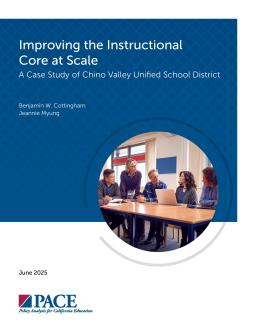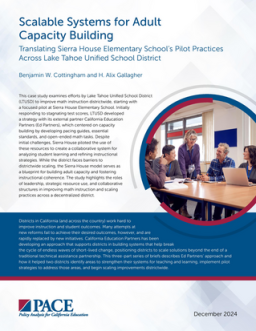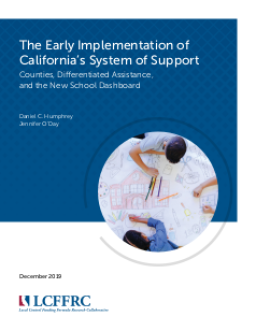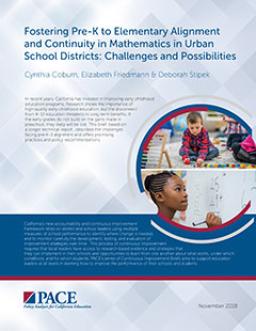A Case Study of Chino Valley Unified School District
Published
Summary
This case study examines how Chino Valley Unified School District scaled the Professional Learning Community (PLC) at Work model across all schools to strengthen teacher collaboration, leadership, and use of student data. Over eight years, the district built coherent systems—scheduled collaboration time, coaching, and consistent leadership—while partnering with the teachers’ union to sustain focus despite COVID-19 and political challenges. Guided by framework for scaling effective practice, CVUSD institutionalized continuous improvement, contributing to notable gains in student achievement.
Translating Sierra House Elementary School’s Pilot Practices Across Lake Tahoe Unified School District
Published
Summary
This case study explores how Lake Tahoe Unified School District worked to improve math instruction, starting a pilot at Sierra House Elementary School. Partnering with California Education Partners, LTUSD addressed stagnant test scores by developing pacing guides, essential standards, and open-ended math tasks. Sierra House used these tools to create a collaborative system for analyzing student learning and refining instruction. While scaling districtwide remains a challenge, the Sierra House model highlights leadership and resource use with collaboration in advancing instructional coherence.
Grass Valley School District’s Progress Towards P–3 Coherence in Literacy
Published
Summary
Grass Valley School District (GVSD) partnered with California Education Partners through an initiative to improve literacy instruction. Over three years, GVSD implemented new literacy assessments and phonics practices, emphasizing teacher leadership, data use, and accountability. That shifted the district’s culture toward continuous improvement, enabling districtwide adoption of literacy initiatives and improved student outcomes. This case study highlights the need for stronger systems to build adult capacity and sustain leadership and collaboration.
Counties, Differentiated Assistance, and the New School Dashboard
Published
Summary
This report examines the early implementation of California's Statewide System of Support, which is designed to empower local educators in determining the best approaches to improvement. While COEs and district officials hold positive views of the system's emphasis on support over compliance, they have concerns about under-resourcing and the effectiveness of the Dashboard measurement tool. The report provides five recommendations to make the System of Support a more comprehensive system aligned with the Local Control Funding Formula.
Challenges and Possibilities
Published
Summary
In recent years, California has invested in improving early childhood education programs. Research shows the importance of high-quality early childhood education, but the disconnect from K–12 education threatens its long-term benefits. If the early grades do not build on the gains made in preschool, they likely will be lost. This brief, based on a longer technical report , describes the challenges facing pre-K–3 alignment and off ers promising practices and policy recommendations.




